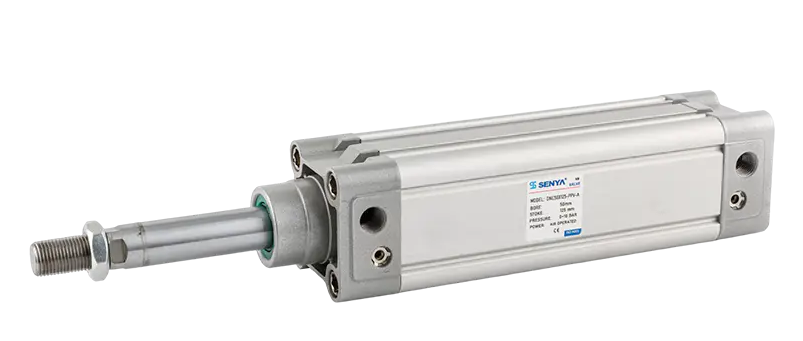1. Seven situations where the cylinder must be replaced
(1). Severe wear/scratching of the cylinder inner wall or piston rod
Symptoms:
Air leakage (the air pressure drops rapidly, which cannot be solved even after replacing the seal ring)
Piston movement is stuck and the speed is uneven
Reason:
Dust/metal chips enter the cylinder and scratch the inner wall
Wear of the piston rod surface coating (such as rust or mechanical damage)
(2). Repeated failure of seals
Symptoms:
Air leakage continues after frequent replacement of the seal ring
Cylinder output force drops significantly
Reason:
The roughness of the cylinder inner wall exceeds the standard (Ra>0.8μm), causing accelerated wear of the seal
Deformation or corrosion of the seal groove
(3). Bent or broken piston rod
Symptoms:
The piston rod is visibly bent or swung
Abnormal vibration occurs when the cylinder moves
Risk:
Possible damage to the guide sleeve, end cover and other components
(4). Structural damage to the cylinder body/end cover
Examples:
Threaded hole slippage (unable to be fixed)
Cylinder body cracking (impacted by external force or material fatigue)
(5). Loss of function due to corrosion or contamination
High-risk environment:
Contact with corrosive media such as acid, alkali, and seawater
High temperature (>80°C) or low temperature (<-20°C) beyond the tolerance range of the material
(6). Performance parameter mismatch
Scenario requiring upgrade:
The original cylinder thrust/speed cannot meet the requirements of the new process
Need to be more energy-efficient (such as switching to lightweight cylinders)
(7). Expiration of service life
Reference standard:
The service life of an ordinary cylinder is usually 2 to 5 million cycles
High-frequency use (such as more than 30 times per minute) may require early replacement

2. Three situations where repairs can be replaced
Only the seal ring is aged → Replace the seal pack (cost reduction of more than 80%)
Buffer is damaged → Replace the buffer assembly alone
Sensor failure → Replace the magnetic switch or position sensor.
3. Four Key Steps for Replacing a Cylinder
Troubleshooting
Use a pressure gauge to check pressure retention
Auscultation to identify internal leaks
Model Selection
Confirm cylinder diameter, stroke, and mounting method (e.g., flange/foot-mounted type)
Pay attention to interface thread standards (e.g., G thread/NPT thread)
Installation and Commissioning
Ensure the air source contains oil mist lubrication (except for oil-free cylinders)
Add a pressure reducing valve to adjust output force
Preventive Maintenance
Drain water regularly (filter and water reservoir)
Install a dust cover on the piston rod
4. Three Tips for Extending Cylinder Life
Air Source Treatment
Use a triplex (filter + pressure reducing valve + oil mist collector)
Load Matching
Actual thrust should be ≤ 70% of the theoretical value (avoid overloading)
Environmental Protection
Use a cylinder with a dust scraper for dusty environments

 简体中文
简体中文 English
English Русский
Русский.png?imageView2/2/w/326/h/326/format/jpg/q/75)

.png?imageView2/2/w/326/h/326/format/jpg/q/75)


.png?imageView2/2/w/326/h/326/format/jpg/q/75)
.png?imageView2/2/w/326/h/326/format/jpg/q/75)

.png?imageView2/2/w/326/h/326/format/jpg/q/75)


